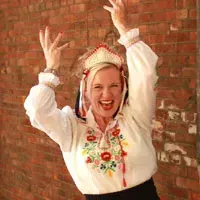Getting it together
Written by

As the last details of The Court Theatre’s opening season brochure are finished, Jeff Clark looks at putting together the support material to promote a new season of plays in Christchurch at the same time as putting together a theatre.
* * *
With six weeks to go before we open the new theatre, the pressure is on. Everyone has been working hard over the last few months, mixed with periods of working INCREDIBLY hard, and now it’s the responsibility of marketing to get all the promotional material completed for The Court’s official re-opening. Currently being developed are season brochures, street signs, ad campaigns, fliers, billboards, invitations, ticket wallets, media releases, complimentary vouchers and show programmes – all while continuing to promote the fundraising drive to actually get the theatre construction completed.
I therefore find it occasionally bewildering when we get comments like “well, it’ll be good when we get the theatre open and there’s actual work for you to do.”
Just as acting can be a strange and mysterious process to the uninitiated, so too the world of marketing can be difficult to grasp. They’re both quite similar, in some ways: both exist largely in the world of the theoretical. Our Artistic Director sums it up well: “a show doesn’t exist until the actors are on the stage in front of an audience.”
Putting aside the issue of actually BUILDING the stage and seats, the actors’ job is to be ready to go on the stage. Marketing are primarily responsible for getting the bums in the seats and we never lose focus of that.
Hurdles
One of the most useful pieces of advice I was given about marketing the arts was that “people don’t look for reasons to go to a show, they look for reasons NOT to go.” It’s not entirely accurate of course, (there’s an increasing percentage of people for whom theatre doesn’t even register as an option), but it’s a good starting point.
The “normal” obstacles that immediately crop up will come as no surprise to anyone who’s worked in the arts (particularly the theatre) - a perception/reputation/stereotype as “boring”, elitist” or “for old people”; ticket prices (perceived or otherwise); and a society increasingly offered entertainment (or distractions – I’m looking at you, Angry Birds) just a button push, mouse click or thumb-swipe away.
Of course, when it comes to marketing a theatre in Christchurch, there are other obstacles to consider.
For one, the layout of the city has completely changed. Bollards, restaurants and cafés where posters and fliers used to be highly visible are now in the middle of the red zone, or far less frequented. Of course, organisations like Phantom Billstickers (who are the largest, if not the only, game in town with regards to posters) and billboard companies have adapted and quickly found new locations with high visibility in the “new Christchurch” and continue to adapt as the city continues to change and shift around us. There’s also the fact that some audience members may have moved – either within the city or out of it so re-establishing contact with those people is much more difficult.
In The Court’s case, it is no longer located in the central city venue it has enjoyed for the past 35 years, meaning the people of Christchurch (and Canterbury) have to be re-educated as to where the theatre is. There is no longer the high volume of tourist foot traffic that made it easy for a visitor with no knowledge of the city to walk into our foyer, see what’s on and buy a ticket. The Court Theatre must be more of a “destination” than it has ever been.
Short Cuts
It’s no surprise that there has been a marked increase in social and online marketing for arts marketing, and much more so in Christchurch in the last year. It is the fastest way to connect with people – particularly young people, although the phrase “silver surfers” has been coined for the increasing number of fifty-plusses who have adapted to the new wired world.
In a city where building facades have gone, websites or other online material become the public face of an organisation. In The Court’s case the website and Facebook page have become the best place for the public to visit and be updated as to progress on fundraising, construction, and upcoming shows and events. Membership of the Facebook page has grown by leaps and bounds over the year.
Now, of course, the theatre is moving from the virtual to the real world; the theoretical to the physical. As I type this, diggers are finishing the trenches in which the power cables will go, then the parking lot will be sealed. Inside, the foyer design is being finalised and the seats are just about ready to go into the auditorium. The physical idea of a theatre is almost realised. The next step is to fill it.
The first play in The Court’s Opening Season is Roger Hall’s A Short Cut to Happiness. When it comes to overcoming obstacles, the latest comedy by NZ’s most popular playwright is a fitting choice.